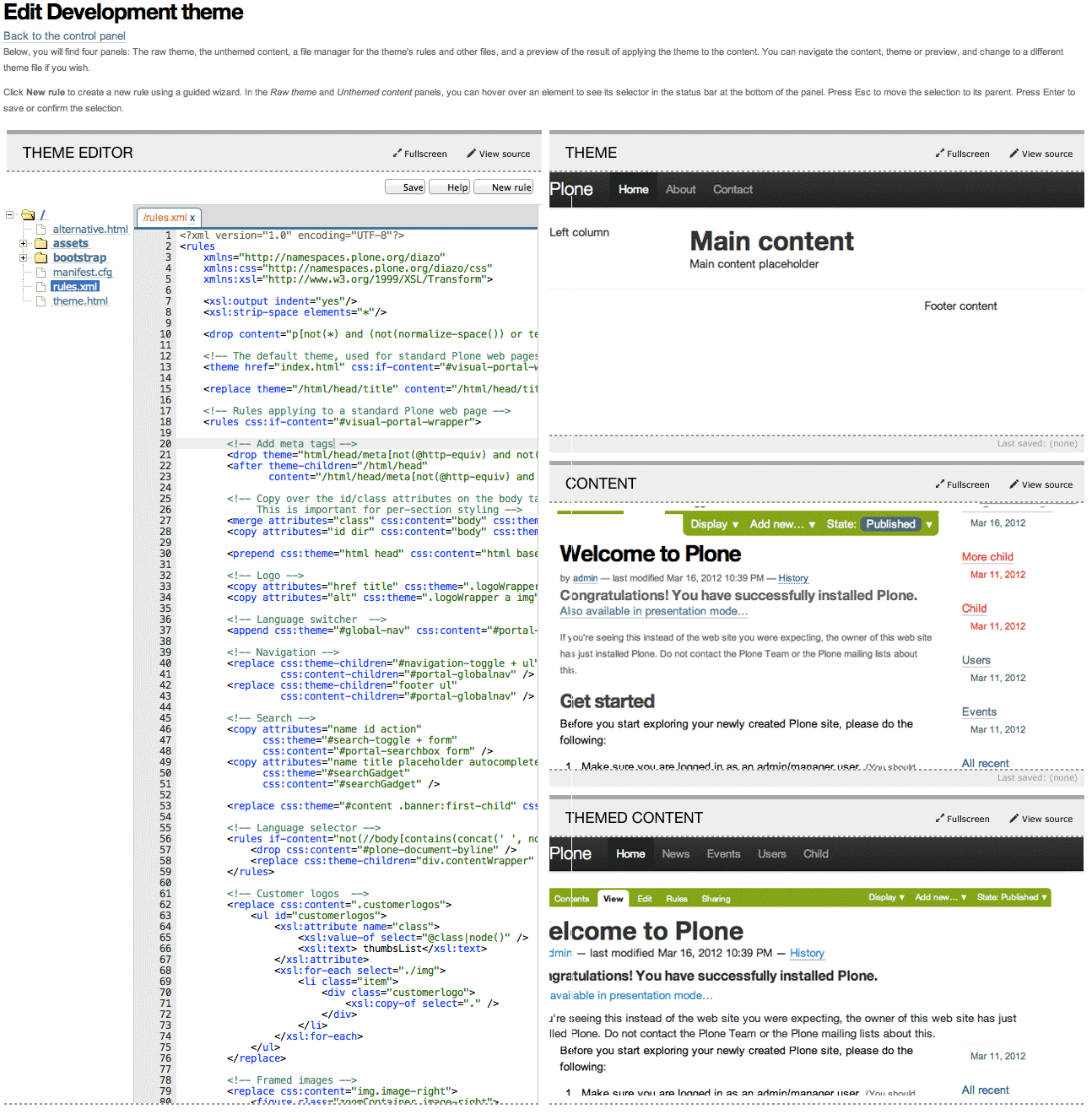Open Source Content Management System provider, Plone, has released the newest version of its CMS: Plone 4.3.
What in an Update?
Improving the look and functionality of a website is an important part of website maintenance, but also is the efficiency of the site's Web CMS. Although, as with any tool, a CMS has to be updated to meet technological changes and customer demand, which is what Plone has done with version 4.3.
Two of the biggest additions to Plone 4.3 are that users will now have access to an In-Plone Theme Editor and Dexterity Content Type Framework.
With Dexterity, users can create new content types through the web, and switch off and online behaviors on a per-type basis, so they won't have to create their own products or take content types from the ZMI. Also, by using Dexterity, Plone is a more collaborative platform for programmers and integrators, while developers can improve performance rates by being able create content objects with a shorter run-time.
The second major addition to the Plone platform is the In-Plone theme editor, which is designed to improve theme creation and design process. According to the Plone website, this tool will enable users to create themes without having to use Python, Buildout or a file system.
In using Diazo, which was added during the last update, to help with the theme creation process users can download and distribute content into zip files so that they can be reused and shared, while integrators can turn the themes into add-ons, if it's needed.
Other Plone 4.3 features include:
- Syndication Updates: There have a been a variety of improvements to the Plone syndication feature. They include support for Atom and iTunes feeds, RSS 1.0 and RSS 2.0, management of syndication channels can now be done from the control panel so a user can, for example, disable the search feed RSS.
- TinyMCE: By adopting TinyMCE 3.4, Plone is now more supportive of the Internet Explorer browser.
- Content Rules User Interface: In updating this interface, the Content Rules UI now works with AJAX making it easier for users to edit, create, disable, enable and apply content rules to a site.
- z3c.form Support to plone.app.portlets: By including z3c.form support, portlet forms can be be created using a form from the Plone library.
- A Strong Password: Plone has added a new API to improve how strong a user’s password has to be, which in turn, makes the system more secure.

The theme editor
A Few Other Changes
While there are a variety of new features designed to improve how Plone works, some older features have been removed with this update.
The Kupu WYSIWYG editor as part of Plone core has been removed, so those who still need it have to use the Products.kupu code, while the Kinetic Style Sheets (KSS) support has been moved to JQuery. Although as with Kupu there is a code that users can use if they still need KSS support: plone.app.kss.
A Plone CMS
Plone, which was launched around 2000 is, as was mentioned, an open source content management system. Built on the Zope application server, it says it’s an easy to use system that can be used on any type of website, such as a blog or internal website -- a premise that has proven to be a favorable choice for some.
Plone is easy to quickly figure out how to manage and organize all sorts of content,” said a review from CMS Design Resource. “One might even compare it a bit to a Wiki, but with much more functionality.”
Other add-ons that can be added to the Plone system include Solgema Fullcalendar, an agenda tool; collective.plonetruegallery, a slide show or gallery tool; and a faculty or staff directory.
